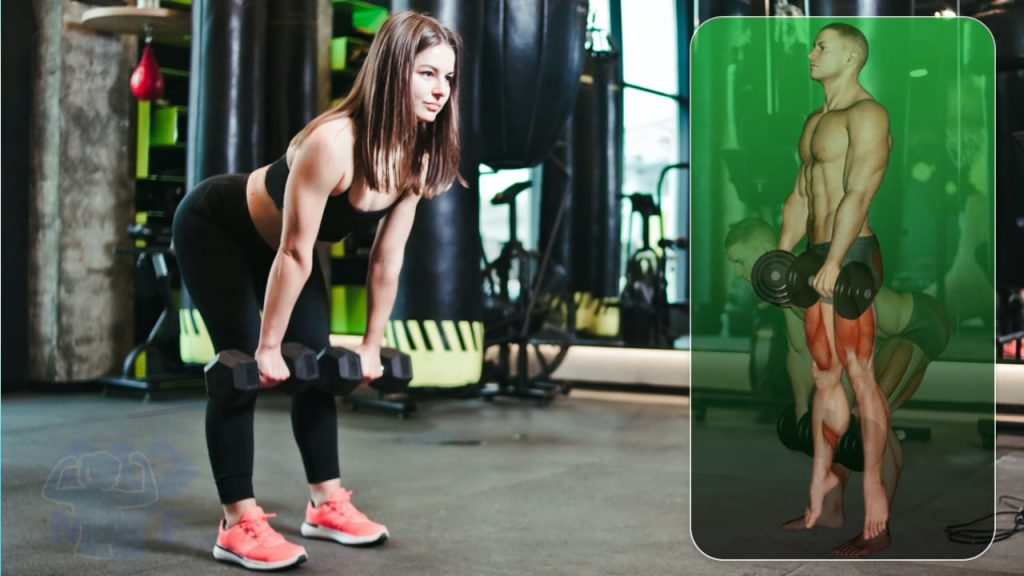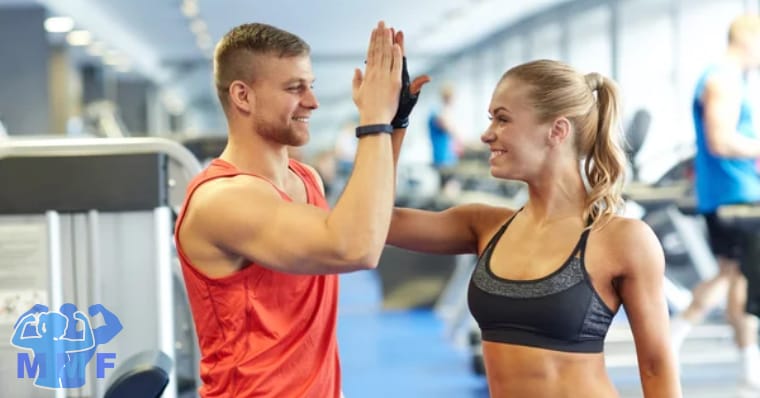Are you looking for a way to improve your explosive strength and jump higher? It can be challenging to add resistance to plyometric jump training safely. A great solution is a Romanian Deadlift to Jump Squat. With this exercise, you can add weight in many forms, from dumbbells to kettlebells or sandbags.
Why The Romanian Dead Lift to Jump Squat
First, the squat is known to increase not only your lower body strength but to stimulate your entire body for increases in your muscular development and overall strength. Secondly, the Jump Squat is a great plyometric exercise in itself that you can do anywhere to increase explosive strength. For that reason, if you have been trying to improve your verticle jump, you should be very familiar with jump squats. At some point, your progress will stop with bodyweight-only exercises. Accordingly, to take your training to the next level, you need to incorporate more resistance. One popular method to add resistance to your jump is to use bands secured to your waist and the floor. While this method also works, it takes specialized equipment. That is why the Romanian Deadlift to Jump Squat is a great way to add this extra weight.
Romanian Deadlift to Jump Squat Movement Technique
The Setup
- Start with very light dumbbells and place them in front of your feet.
- Bending with mostly with your hips but keeping a slight bend in your knees, grab the dumbbells. You should be looking down with your head leaning forward so that your spine is straight.
- While maintaining your head and back alignment, lift your chest and pull your shoulder blades back and down.
The Jump
- The position should be the same position you would take when attempting to sit back on a chair or couch.
- Your body is now coiled to jump. Moving your shoulders up and hips forward jump. Keep your arms straight with the weight in your grasp.
- Next, focus on landing softly. Use your feet by absorbing some momentum with your feet, landing on the balls of your feet. Then absorb more of the impact by bending your knees into a squatting position.
- Understandably it is essential to cushion your knees and to reduce any potential force on your lower back. Finally, slowly return the dumbbells to the floor.

Start with 2 to 3 sets of 4 to 6 repetitions. You should rest for 2 minutes between each set. Your goal should be to raise the weight to what you can comfortably control and still leave the ground. Then, work up to 3 to 5 sets of 8 to 15 repetitions with 1 to 2 minutes rest between sets.
Romanian Deadlift to Jump Squat Benefits
This movement can increase not only your strength and power but also improve your coordination and balance. Incorporating this dual compound movement into your leg or back workout can also ban excellent plateau buster because it will employ the action of many supporting muscles. It will give you the explosive gains of plyometrics with the benefits of resistance training as well. The Romanian Deadlift to Jump Squat movement is also a great exercise to improve lower leg balance and visual appeal of your backside.
Some additional benefits are:
- Stretches your deep hip flexors (psoas) and the muscles (intercostals) between your ribs.
- Strengthens your spine and back muscles.
- Develops explosive strength in your glutes, hamstrings, and lower back.
- Note: While the hip extensor muscle groups (hamstrings and glutes) are activated during the exercise, your quads take most of the impact stress, and therefore receive the most significant training response.
- Aids in balancing quads and hip extensor development.
- Note: You must make a conscious effort to balance your quad and hip extensor training. If you don’t will likely develop a strength imbalance between these two muscle groups. As a result of this muscular imbalance, you will have overall decreased strength, potential injuries (frequently pulled hamstrings), and less than your most desirable backside.
- It helps increase vertical jumping height.
- It can improve your acceleration and explosive running speed.
Precautions For Jumping With Weight
This movement is not for everyone. Understandably, you will be jumping with weight and lifting with your back. There is a lot of things here that can lead to an injury. That is why you should start with very little weight or no weight and work your way up. Remember, this is an advanced training exercise. If you are not familiar with plyometrics such as jump squats and box jumps, you should start with some of these bodyweight exercises first.
Tips For Improving Your Results
- It is very important that when your deadlifting and jumping that you keep your abdominals engaged.
- The landing is part of the exercise, so focus on landing softly with your knees bent.
- Remember to perform the entire action in a continuous fluid motion. Specifically, the constant motion allows your body to maintain the natural arch of your spine and transfer force through your hamstrings.
- Keep your back aligned in a good posture position throughout the movement. Do not arc you back forwards. The biggest mistake most people will make in the execution of this exercise is not maintaining the alignment of their lower back. Some will even go so far as to bend over till the weight touches the ground. Bending over is a huge mistake. You are not merely as a hamstring stretch, nor should it look like you are doing good mornings. You must keep the lower back from moving and let it play a much safer role as a stabilizer.
- When bending over, squeeze your glutes and push your hips back. The position should be the same position you would take when attempting to sit back on a chair or couch.
Are You Ready For Explosive Strength Building
Admittedly, jumping with weight in your hands is not for everyone. Although, if you are into advanced training techniques, the Romanian Deadlift to Jump Squat is a good one. If you are looking for some introduction to plyometric check this article out. Getting the Edge In Sports With Plyometrics.




